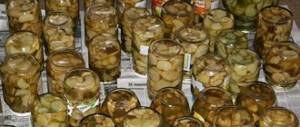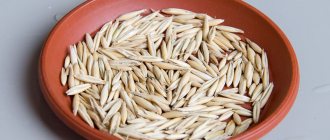Milk is used in the treatment of diseases of the respiratory tract, nervous, cardiovascular systems and digestive tract. For those suffering from gastritis, a natural question will arise: is milk ok for gastritis?
Milk is a unique product created by nature itself. It is rich in vitamins, calcium and easily digestible protein, and is indispensable in the diet of children and adults. It is believed that drinking a glass of milk once a day can strengthen the walls of the brain, develop intelligence and strengthen memory.
In ancient times, milk was called “white blood” and “juice of life”; its benefits have been tested for thousands of years.
To drink or not to drink - that is the question...
In the last century, milk was believed to help remove toxins from the body. But later scientists found that the named drink is still not able to cleanse the body of harmful substances.
It's no secret that milk is a nutritious product. It contains many useful substances, vitamins, and microelements. But is it possible to drink milk at a fever, and how does it help with colds?
Some scientists are confident that the benefits of the product during illness are exaggerated. So is it possible to drink milk at a fever? According to some doctors, if you have a cold, you should not drink it warm, as it causes acidification of the blood. This effect is already caused by heavy, sweet, fatty foods, baked goods, sweets, and some fruit juices. And if the question arises about whether it is possible to drink milk at a temperature, then some scientists will say that you should not do this.
Goat or cow?
The quality of milk in the treatment of gastritis is of direct importance. Homemade whole milk that has not undergone heat treatment, which is rich in essential fats, will be of great benefit.
If you choose between cow's and goat's milk, then experts give preference to goat's milk in the treatment of gastritis.
There are good reasons for this:
- In terms of the amount of lysozyme , goat's milk is the undisputed leader. This enzyme is the main assistant in the treatment of the disease; it is able to eliminate the destructive effects of acid on the walls of the stomach.
- Beneficial bacteria , which goat milk is rich in, have a destructive effect on the cause of gastritis, the Helicobacter pylori bacterium.
- Albumins, special proteins contained in milk, improve intestinal function, accelerate digestion processes in the stomach, and promote the rapid absorption of other products.
- Goat's milk contains less lactose than cow's milk. Therefore, it is less allergenic.
- Fine goat milk fat does not cause stomach irritation. Because of this, the drink can be consumed in small quantities even with gastritis with low acidity.
Benefits for colds
But the named product also has undeniable advantages. So, during a cold, more toxins accumulate in the body. To remove them from the body faster, you need to drink as much fluid as possible. Milk contains substances that have diuretic properties and replenish potassium deficiency.
When you have the flu and other acute respiratory viral infections, you always lose your appetite, and drinking a glass of drink can not only relieve pain and soothe a sore throat, but also increase the body's resistance.
Is it possible to drink hot milk at a fever, and how do you generally drink it during illness? For many years it was considered the best remedy for colds. It was given to both adults and children to boost immunity.
Contraindications
Milk should be selected depending on the general condition of the patient. Despite all its usefulness, the product has some contraindications, in the presence of which doctors categorically limit the use of the drink. These include:
- congenital or acquired intolerance to milk sugar;
- tendency to allergies;
- hypersensitivity to certain trace elements;
- frequent bowel movements.
Advice! If you have hunger pains, you should drink 200 ml of warm milk at night.
Milk is good for the digestive tract; its consumption is possible for stomach ulcers at any stage. The daily norm of the drink is 400-450 ml. You cannot increase the rate spontaneously. If, while eating foods based on dairy products, the patient develops a rash on the skin or any defecation disorders, it is necessary to consult a gastroenterologist.
Milk help
Having decided to use this drink for a cold, you should understand that the body’s digestibility of any food during illness decreases. And when wondering whether you can drink milk at high temperatures, remember. That it is better to use it at low temperatures, mild chills with honey. This will help keep you warm.
A strongly elevated body temperature has a negative effect on the intestines, and it is difficult for it to cope with even minimal load. In this case, you should not drink warm milk, otherwise diarrhea and flatulence may occur.
But before going to bed, it is recommended to drink a drink with honey and salt. This cocktail helps to calm down and has diaphoretic properties. It is recommended to take it even at fever.
How to choose and where to buy
Dairy products sold in stores are not always good for the stomach . They are often produced with the addition of dry powder and do not have the necessary nutritional properties. It is better to give preference to quality and naturalness . The ideal option is to buy farm or village products from a reputable seller.
Raw cow's milk may contain pathogens, so boiling is required before consumption.
In order not to lose valuable properties, you need to boil correctly : do not heat it several times, do not expose it to high temperatures for a long time, cool and close immediately after boiling.
Traditional medicine recipes
To cope with cough and reduce cold symptoms, it is recommended to drink milk with honey and soda. This remedy is prepared in this way: take a glass of warm milk, add two tablespoons of honey and a pinch of soda. The composition is drunk immediately. This drink has a pronounced diaphoretic effect and helps remove phlegm when coughing.
For ARVI, consuming a glass of warm milk with onions three times a day shows good results. To prepare the medicine, take a medium onion and cut it into 4-6 pieces. It is immersed in boiling milk for three minutes. Then they remove it. Add a spoonful of butter to the boiling mixture.
During the cold season, it is recommended to drink a glass of milk with a spoon of honey once a day. This remedy will help protect the body from pathogenic microorganisms and bacteria. The drink strengthens the immune system, improves sleep, relieves a sore throat, and treats cough. After drinking honey milk, your overall health improves.
Milk, fruit juice, and rosehip decoction are excellent remedies that help protect the body from colds during epidemics. They help remove viruses and bacteria from the body, preventing them from developing.
Milk in other dishes
From milk you can prepare many delicious dishes that will be useful for those suffering from gastritis. Using the starter, you can make homemade kefir, yogurt and yogurt.
Cottage cheese can be consumed either fresh or used to make cheesecakes and curd soufflé, puddings and dumplings, casseroles and cheesecakes. For light snacks, milk jelly or tea with cream are perfect.
The diet for gastritis recommends steaming or baking dishes without crust. Salt consumption should be limited.
Milk porridges should be the main part of the diet menu. Semolina, buckwheat, rice and oatmeal will be useful. They need to be cooked longer than usual. You can make milk porridge from pasta.
Compound
Cow's milk is best known as a source of easily digestible calcium (120 mg per 100 ml), about 12% of daily intake. It also contains:
- phosphorus;
- potassium;
- sodium;
- chlorine;
- magnesium;
- cobalt;
- iodine;
- molybdenum;
- zinc;
- chromium;
- retinol;
- riboflavin;
- niacin;
- choline;
- pantothenic acid;
- cobalamin;
- biotin.
Cow, goat, and horse milk, like all animal products, contain a full range of amino acids, including 8 essential ones, while soy and coconut milk do not contain them. And the discharge that accompanies candidiasis is similar to cottage cheese (not even milk) only in appearance.
This disease is caused by a yeast-like fungus of the genus Candida (about 20 species out of 150 existing can reproduce in the human body). It is classified as opportunistic - it is not part of the microflora from birth, but after infection and the first acute manifestations it “subsides”, integrating into the normal microflora of the genital tract, intestines, and mouth.
Its activity is associated with the decomposition of protein secretions of the mucosa and its own cells. And the whitish lumps are a conglomerate of mycelium threads (the main method of reproduction for mushrooms of this species) and the “mycelium” itself. Apart from external similarities, they have nothing in common with dairy products.
Dairy products
Can a nursing mother drink milk? In addition to it, a woman can include sour cream, yogurt, and kefir in her diet. You can prepare various dishes from them, such as cottage cheese casserole. The main thing is that during heat treatment the beneficial properties of the products are preserved.
Allergic reactions most often occur when drinking whole milk. When replacing it with fermented milk products, rashes and indigestion usually do not occur in infants. If you introduce low-fat cottage cheese and kefir into the daily menu, this will have a beneficial effect on the health of mother and baby.
If an allergy to milk occurs during breastfeeding, fermented milk products will be a worthy replacement.
When can it be harmful during pregnancy?
But it must be remembered that there are cases when even such a useful product can cause harm. It is especially important for a pregnant woman to know all the contraindications to drinking milk :
- Ulcerative colitis;
- Lactase deficiency;
- Individual intolerance to milk protein (this type of intolerance is determined in a person from birth);
- Anemia (iron is an important microelement for pregnant women; milk interferes with its absorption, so if your doctor has prescribed you to take additional iron-containing medications, you should reduce your milk intake).
Dietary needs of people with diabetes
The bodies of people with diabetes cannot produce or use insulin effectively. Insulin is a hormone that helps regulate blood sugar levels. When insulin doesn't do its job effectively, blood sugar levels can rise, causing hyperglycemia.
There are two types of diabetes: type 1 and type 2. No matter what type of diabetes you have, it is important to control your sugar intake. Sugar is a type of carbohydrate, so counting carbohydrates is often recommended for people with diabetes.
People with diabetes may also have high levels of cholesterol or triglycerides in their blood. Triglycerides are a type of fat that can increase your risk of heart attack. It is important to monitor the amount of saturated fat and trans fat you consume, which is present in most people's diets.
Diabetes can also make some people more susceptible to bone fractures. A diet high in calcium can help keep bones strong, thereby reducing the risk of bone fractures. One way to strengthen your bones is to consume dairy products daily.
Adding calcium-rich milk to your diet may require some planning. Creating a meal plan specifically designed for people with diabetes can be a good way to control your blood sugar levels so you can live a fulfilling life for years to come.
How to Make Milk Part of Your Meal Plan
There are several nutritious, low-carb, great-tasting dairy options.
Skim organic cow's milk
Cow's
This skim milk comes from grass-fed, grass-fed, natural-fed cows. Homemade milk sold in local markets can be included in this category, but its fat content can be very high. A 2013 study suggests that organic milk may contain more health-promoting omega-3 fatty acids than non-organic versions of the drink. It contains 12 g of carbohydrates and 8 g of protein per cup (250 ml). Its rich, clean taste also makes it ideal for adding to coffee and tea.
250 ml of whole milk contains:
- Calories: 149
- Fat: 8 grams
- Carbohydrates: 12 grams
- Protein: 8 grams
- Calcium: 276 milligrams
Goat milk
Goat
Sweet and fresh, skim goat milk contains 11 grams of carbohydrates and 8 grams of protein per glass. This calcium-rich product is delicious in milkshakes. When making smoothies, use diabetic-grade sugar substitutes instead of sugar.
250 ml of whole goat milk contains:
- Calories: 172
- Fat: 10.25 grams
- Carbohydrates: 11.25 grams
- Protein: 7.2 grams
- Calcium: 335 milligrams
Unsweetened vanilla almond milk
Almond
This is a slightly sweet, calcium-rich milk without lactose. One cup (250 ml) contains 40 calories, 2 grams of carbohydrates and 0 grams of saturated fat. The pleasant nutty taste and aroma of almond milk makes it an ideal addition to breakfast cereals and whole grain cereals.
250 ml of unsweetened almond milk contains:
- Calories: 39
- Fat: 2.88 grams
- Carbohydrates: 1.52 grams
- Protein: 1.55 grams
- Calcium: 516 milligrams
Unsweetened organic soy milk
Soy
Soy milk is very rich in calcium and is an alternative to regular animal milk. It contains vitamin B12 and has only 4 grams of carbohydrates per cup (250 ml). If you like cocktails, this is your option.
250 ml of unsweetened soy milk contains:
- Calories: 82
- Fat: 4 grams
- Carbohydrates: 1.74 grams
- Protein: 4.35 grams
- Calcium: 62 milligrams
Unsweetened flax milk
Flaxseed
Flaxseed unsweetened milk is a refreshing drink healthy for diabetics. One cup of this drink (250 ml) contains only 1 gram of carbohydrates and 25 calories. It's allergen-free and provides 1,200 milligrams of omega-3 fatty acids, so drink with confidence and enjoy.
250 ml of unsweetened flax milk contains:
- Calories: 25
- Fat: 2.5 grams
- Carbohydrates: 1 gram
- Protein: 0 grams
- Calcium: 300 milligrams
Is thrush transmitted through breastfeeding?
Biolactate synthesized by the mammary glands cannot contain fungus for several reasons:
- due to special attention to them from the immune system - like all tissues that produce anything in the body;
- due to the absence of other conditions for its reproduction there (mucous membranes and their secretions, the abundance of free oxygen around, since this pathogen is one of the most “ardent” aerobes).
It is not very resistant to external aggressive factors, and quickly dies on the skin, clothing, and household items, being transmitted only through close and prolonged physical contact. The only difficulty is that breastfeeding is one of them.
The mother may accidentally touch the area around the nipple with her fingers contaminated with its mycelium when releasing the breast from the bra. In this case, the threat of oral infection in the child takes on tangible features, and it may seem as if thrush is transmitted through breast milk. In fact, it is false, and to prevent such phenomena, it is enough to simply treat the hands, nipple, areola and skin of the entire mammary gland with antiseptics immediately before giving the breast to the baby.
The mechanism of action of milk in a hangover state
When you have a hangover, it is not enough to block unpleasant symptoms with medications. It is necessary to help the body break down and remove derivatives of the breakdown of ethyl alcohol, and replenish the supply of vitamins.
The mechanism of action of milk for a hangover applies to all of the above areas. Tryptophan, contained in large quantities in cow's milk, breaks down acetaldehyde into acetic acid, which is harmless to the body.
This is how milk helps with a hangover.
Acetaldehyde is to blame for a person's severe morning condition. This is an acid, a breakdown product of alcohol, more precisely ethanol, which disrupts important body functions. Acetaldehyde is a strong poison, and any intoxication leads to deterioration of health. If a person drank a lot, mixed alcoholic drinks of different strengths, then the poisoning will be severe.
What do we know about hangovers? Dry mouth, headache and dizziness, nausea, hand tremors and gastrointestinal disorders - these are symptoms that lovers of breastfeeding often feel the next morning after drinking too much. But this is nothing more than ordinary poisoning. The aforementioned acetaldehyde acts as a toxin.
Milk and fermented milk products have a very beneficial effect on the poisoned body. By binding toxins, dairy products contribute to the rapid removal of toxic substances from the liver and kidneys.
It’s not for nothing that previously all workers in hazardous industries were given free milk; it has long established itself as an excellent detoxifying agent.
Possible problems due to the introduction of dairy products into the diet
Lactose hypersensitivity, or lactose intolerance, involves the body's inability to convert and absorb the sugar found in breast milk and all infant formulas.
This is why mothers sometimes cannot use milk when breastfeeding.
The reasons for the appearance of this kind of immunopathological process can be called a number of fairly specific conditions:
- underdevelopment of the child due to prematurity;
- hereditary tendency;
- lack of the necessary microflora of the intestinal tract.
The baby cannot independently explain its own condition, and for this reason, control is considered the most effective diagnostic method. Immediately after feeding, within 5-15 minutes, the baby may experience:
- bloating and frequent passing of gas;
- increase physical activity;
- consistently loose stools;
- dry eczema appears (rough skin with redness that can turn into a purulent process). More information about the types of rashes in children can be found here.
In the mother after 30 minutes:
- vomit;
- diarrhea;
- bloating and discomfort in the stomach;
- sleep disorders.
Is it possible to breastfeed milk if a number of the listed symptoms exist? Absolutely not. Be sure to consult a specialist, conduct a study of the baby and yourself in order to confirm the diagnosis and, if necessary, change the diet.
Diagnosis and nutrition for gastritis
Diagnosis of chronic gastritis is carried out on the basis of endoscopy, examination of the acidity level of gastric juice, tests to determine Helicobacter in the body, blood biochemistry, and stool examination.
Treatment is carried out mainly on an outpatient basis. The main factor in recovery is normalizing the diet and following a diet. It involves the exclusion of everything spicy, salty, sour, fried, and fatty.
And also smoked meats, canned food and carbonated drinks - these are the ones that can more seriously injure the damaged mucous membrane.
Remission period
During the period of remission, milk products must be present in the patient’s diet, because it is a source of animal proteins.
Cook porridge, omelet or soup with milk, but first mix with water in equal proportions. At home, you can also make cream or sour cream from milk. But the main thing here is to look at the fat content; the finished product should not exceed 10% fat content.
If you do not have a special device for measuring fat content, then milk products can be bought in the store, but carefully study the composition. Doctors recommend buying products in specialized stores; you will already be sure that there are no chemical additives in sour cream, milk or kefir.
Should you avoid this product to prevent candidiasis?
There is no reason for this. In any case, dairy and fermented milk products are not a suitable habitat for the fungus, so their consumption does not affect the prognosis for relapses of intestinal or oral candidiasis. Ryazhenka with cottage cheese has no direct contact with the reproductive system when taken orally (there is indirect contact in the form of a shift in the acidity of urine and feces).
At the same time, they help maintain the normal composition of the rest, in addition to the causative agent of thrush, the “population” of the intestines and genital tract (when applied topically), inhibiting the proliferation of the pathogen and preventing new exacerbations.
Metabolism of alcoholic beverages by type or rate of elimination from a woman’s body
- Do not drink for the first 4 months after giving birth.
- You should not drink on an empty stomach, because alcohol will enter the bloodstream in maximum concentration.
- It is necessary to express milk in advance for 2-3 feedings.
- The maximum dose is 300 grams of wine or beer, and after 6-7 hours you can feed the child.
- Choose only high-quality drinks, giving preference to homemade wine without alcohol.
Don’t forget that a nursing mother’s diet should be nutritious and balanced. It is also important to properly formulate a diet after a cesarean section.
But what should a nursing mother do at the holiday table so as not to feel like a black sheep?
- An alternative to alcoholic drinks is non-alcoholic beer or wine. Such beer is even healthy - hops, malt, and B vitamins will not harm a nursing woman or baby. Alcohol-free wine is similar in composition to juice, but has a more tart taste. You can pamper yourself during the breastfeeding period at dinner or lunch.
- Change company. Very often, a young mother is subjected to pressure from the team, while experiencing negative emotions and a feeling of guilt in front of the child. To exclude such cases, you should try to avoid celebrations with alcoholic beverages, or try to talk with friends about the “prohibition” at home during breastfeeding.
- A healthy lifestyle is now in trend, and by giving up alcohol, a woman can only benefit.
How to use?
Milk is a product that a person gets used to drinking from childhood. If it is so healthy, then the more you drink, the better. This conclusion suggests itself. However, moderation is needed in everything.
When consuming milk, you should adhere to the rules listed below.
- Milk will be better absorbed if it is additionally diluted with other drinks in a 1:2 ratio, for example, juice, mineral water or tea.
- If you drink food with milk, especially fatty and rich foods, digestion may be disrupted. It is better to use it as a separate product.
- Like other foods, milk needs to be chewed. Since it is liquid, for better digestion you should first hold a small sip in your mouth.
- Cold milk can cause a sore throat faster than water at the same temperature. Therefore, warm it up before using. It is better to drink milk hot or at room temperature.
- It is necessary to monitor the effect milk has on the body. Recently, nutritionists have come to the conclusion that sour milk is healthier than fresh milk. Therefore, if you experience any unpleasant sensations when drinking milk, you need to replace it with a fermented milk product.
Is it possible to drink milk if you have thrush?
This is not prohibited due to the lack of relationship between one and the other, and is even recommended to maintain the balance/functionality of the intestinal microflora. The fungus of the genus Candida is able to organically coexist with its components, but the most favorable environment for it is the reproductive tract.
With the constant “feeding” of the intestinal colony by the entry of new “samples” from there into the lower sections of the intestine (the anus is located not so far from the genitals), an imbalance is inevitable. It can be facilitated by taking antibiotics, a monotonous and insufficient diet, and other gastrointestinal infections.
In such cases, intestinal candidiasis is likely, manifested by gases, indigestion, and aching pain. Nothing dangerous, but nothing pleasant either. Milk and, in particular, fermented milk products are well-known agents for normalizing microflora and peristalsis. Daily inclusion of kefir, fermented baked milk, cottage cheese, yogurt, and whey in the diet helps to avoid this scenario, even if there is a source of exacerbation nearby and factors that contribute to re-infection (recent colonoscopy, enemas, anal fissures, poor personal hygiene, immunodeficiency).
Another danger of thrush lies in the prospect of its ascending spread to the urinary system and involvement of the urethra, bladder, and kidneys. Normally, this is prevented by the reverse flow of urine and its sanitizing properties that are unfavorable for fungal growth (acid balance, the presence of protective bodies and hormones). But if one of them disappears or immunodeficiency progresses, it can lead to kidney failure.
Dairy products (although like any animal, including meat) help here too. During the digestion and metabolism of proteins, many purines are produced - acidic bases, breakdown products. They are excreted in urine and feces, “acidifying” them. Abuse of animal proteins or difficulties with the exchange/removal of waste products result in gout. But apart from this, their abundance in solid and liquid substances to be excreted makes them and the organs that accumulate them less susceptible to any infection.
Diet after binge drinking
Diet or balanced nutrition when getting rid of alcoholic consequences is often prescribed for restorative purposes. Yes, to intensify the recovery of metabolic processes disrupted with the direct participation of alcohol, it is better to adhere to a certain diet, and not to consume any food in a random order or even chaotically.
| Person's weight/Type of alcohol | Volume of alcohol consumed, grams |
| Beer | |
| Champagne | |
| Wine | |
| Vodka | |
| Cognac |
Associated symptoms
Regardless of the cause of loose stool in an adult or child, experts note general symptoms, expressed in the following negative effects:
- Bloating is a must.
- Active wandering seething caused by gas formation in the gastrointestinal tract.
- Flatulence.
- Spasmodic pain.
- Loose stools.
If you have diarrhea and the listed symptoms, you should say “no” to milk until the doctor gives his resolution on the possibility of consuming the product.










